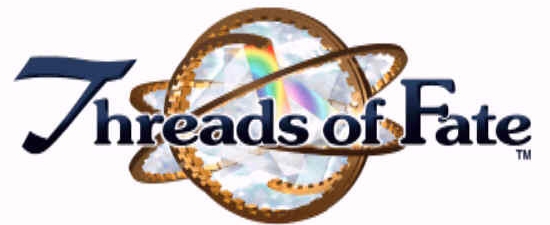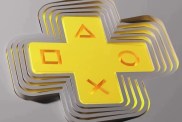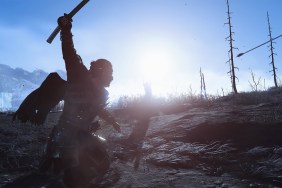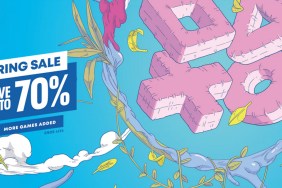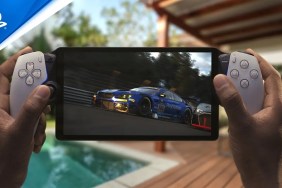PlayStation Classics Corner is a new series on PSLS dedicated to modern reviews of PlayStation Classics released on PSN.
About the game:
Threads of Fate is an action-RPG developed by Squaresoft, originally released in North America on July 18th, 2000, and as a PSone Classic on April 19th, 2011. The game costs $6 and works on Vita, PSP and PS3, and since it doesn’t require the use of L2 or R2 it plays well on handhelds.
Threads of Fate stars two protagonists, each with their own playable campaigns, who share the same goal: acquire the Dewprism, an artifact that can grant wishes. Rue, the stoic, selfless, heroic male protagonist, wants the Dewprism so he can bring a deceased loved one back from death. Mint, the greedy, vulgar, crude, comically hyperactive corruption of the princess trope (also, the female protagonist), wants it so she can control the world. Rue’s campaign is touching and poignant, on the other hand Mint’s is hilarious and light-hearted.
On their journey, Rue and Mint will be hindered by treasure hunters and dark forces conspiring against them, and aided by a researcher, his family and the locals. The town of Carona is the central hub of the game, from which players can fast-travel to various levels like ancient ruins, forests and a mountain inhabited by the fearsome dragon Wylaf. The cast of characters see a ton of development, with the narrative putting a lot of focus on their interactions, backstories and personal goals. The game’s translation is nearly flawless, though I did notice a misplaced apostrophe at one point (that’ll be one point off the review score, Squaresoft, I expect better out of you).

The two campaigns’ events contradict one another with various plot points, most notably the endings. To compare the two campaigns, players experience the vast majority of the game’s events merely from an alternate perspective, but with many events and much of the dialog changed, occasionally branching off into totally different levels. I absolutely recommend players experience Rue’s story first, as the emotional impact would be dulled if the story’s general events were revealed beforehand; alternately, the comedy of Mint’s playthrough wouldn’t be lessened at all if experienced second. New Game + is supported in Threads of Fate, but it doesn’t offer any real difference, just letting players carry their items, money and stat changes to a new playthrough. Each campaign is around ten hours long, with the entire experience lasting between 20 and 25 hours, depending on whether or not players complete the side-quests.
Gameplay in Threads of Fate is closer to Kingdom Hearts or the Mana games than Final Fantasy, with a real-time combat system augmented with light RPG, puzzle-solving and platforming elements. Players can perform combo attacks or aerial attacks, and fighting enemies is very satisfying. There are dozens of enemy types and quite a few bosses, so combat rarely feels repetitive. There usually isn’t a recovery period after being knocked down, though, leading to frustrating moments occasionally.
As Rue, players can transform into any of the last four monsters they’ve defeated, each with their own attacks; a few have special platforming abilities like double-jumping or being able to jump higher or further than normal, others might be able to solve puzzles, like using a water attack to grow a plant. Players switch monster forms by holding down a button and going through a user-friendly monster form selection wheel.
Mint, on the other hand, can cast magic of seven color-coded classes, like blue (water), red (fire), or yellow (lightning), with each modifiable by spell effects like normal (usually standard blasts), wide (wider blasts), power (more powerful blasts) and hyper (extremely powerful AOE attacks). Players switch between spell colors and effects with a spell interface, similar to the one Rue uses to switch monster forms.
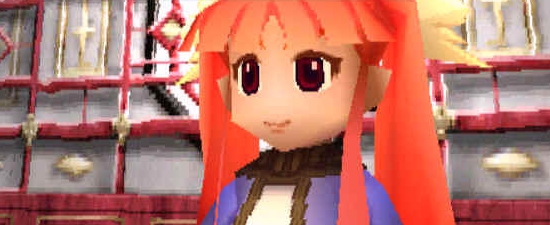
Rue’s special monster attacks and Mint’s magic attacks use MP, which is recovered when players attack enemies, who also drop vials that recover either HP or MP when defeated. Any enemy killed also drops a monster coin players automatically acquire, which can be sold – the primary way players acquire funds in Threads of Fate. The game can be almost impossibly difficult if you don’t upgrade your equipment at Carona’s local equipment store every time they replace their inventory, as I learned after completing nearly half of Rue’s campaign without even realizing the store existed. Keep up with new stock, and the game’s difficulty is fair.
Luckily, when players die they aren’t taken to the “New Game – Load Game” page: they can use coins to revive upon death. All the coins revive the player with full health, but the value of the coin (bronze, silver, gold, platinum) determines how much MP they recover with. I recommend players only use bronze for revival and sell the more valuable ones at Hobbs’ shop (across from the bar) for status upgrades, since MP is so easy to recover. Even though platinum raises the player’s attack and defense stats a point each upon use, it can be sold for enough gold to buy three stat upgrades. I never even came close to running out of coins, which can be found shining on the ground or purchased at the local church.
Controls feel smooth and intuitive, especially analog stick movement, due to smart dead zone use rarely seen in PS1 titles, but are inadequate for some of the more difficult platforming segments. After landing from a jump, there seems to be a half-second delay preventing further jumping; this makes sequences that require constant jumping pretty frustrating until you can adjust.
A heads-up: just push on through the platforming mini-games in Mel’s Atelier, they may be horrifically frustrating but the game gets so much better after that. I actually didn’t touch the game for months due to the frustration the platforming mini-games at Mel’s Atelier provided, but more recently I was able to rush through all of them in around five minutes. They’re brief, but so annoying; even worse, they’re near the start of the game, so players won’t be very invested in the game by this point.
Mint and Rue don’t level up traditionally; instead, there are four stats of note: Health Points, Magic Points, Strength and Defense – all self-explanatory names, but the way players improve their stats is different from most games. Players improve their HP by taking damage, their MP by performing magic attacks, and Strength and Defense by buying new equipment periodically or purchasing stat upgrades at Hobbs’ shop. I found it wasn’t worth it to upgrade HP or MP, so don’t waste money on them – just upgrade attack and defense.
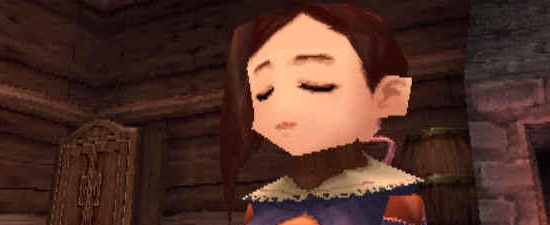
Threads of Fate is set in a 3D game world, and the development team put focus on visual clarity over detail. Due to this, the game has aged gracefully, doesn’t look anywhere near as outdated as the vast majority of the PS1’s offerings. The game has zero CG cutscenes – while it would’ve been cool to have them, Threads of Fate gets the story across very well with in-engine cutscenes, and character animations are all top-notch. The visual consistency this setup offers makes up for us not being able to see the characters rendered with better visual definition, though it definitely would’ve been nice to have more official artwork for all the characters.
The music, composed by Junya Nakano (who helped the composition and arrangement of Final Fantasy X and Final Fantasy XIII, Musashi: Samurai Legend and Front Mission: Gun Hazard), is just as beautiful and unique as the game itself, helping to set the somber tone of Rue’s story and the playful tone of Mint’s with equal skill. While it may not blow Nobuo Uematsu’s work out of the water, it sounds like nothing else I’ve ever heard. It’s unquestionably in the upper rung of video game soundtracks.
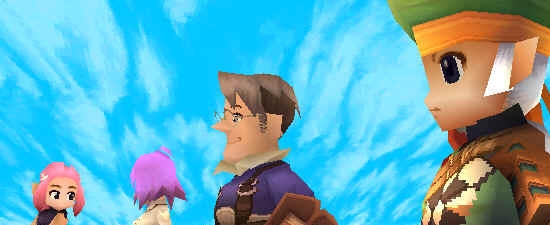
Threads of Fate is a perfect embodiment of all the greatness the PlayStation Classics lineup has to offer, a rare, under-appreciated gem that only costs $6. There may be a few frustrating sections of the game, but the story is packed full of personality and skill at evoking emotion in the player, the translation and writing are spectacular, the music trumps most modern game soundtracks and the art direction holds up over a decade after its initial release. Buy it, cherish it, love it forever, then cry yourself to sleep when you realize its ending left the series open for a new adventure and we haven’t seen a sequel in 13 years.
[Images]
-
Two campaigns: one touching, one hilarious
-
Visuals have aged masterfully
-
Nearly flawless translation
-
One of the best soundtracks on the PlayStation
-
Great Game Over continues system
-
Mel's Atelier mini-games
-
Jumping quirks add frustration to some of the platforming
-
Knock-down recovery doesn't work half the time
